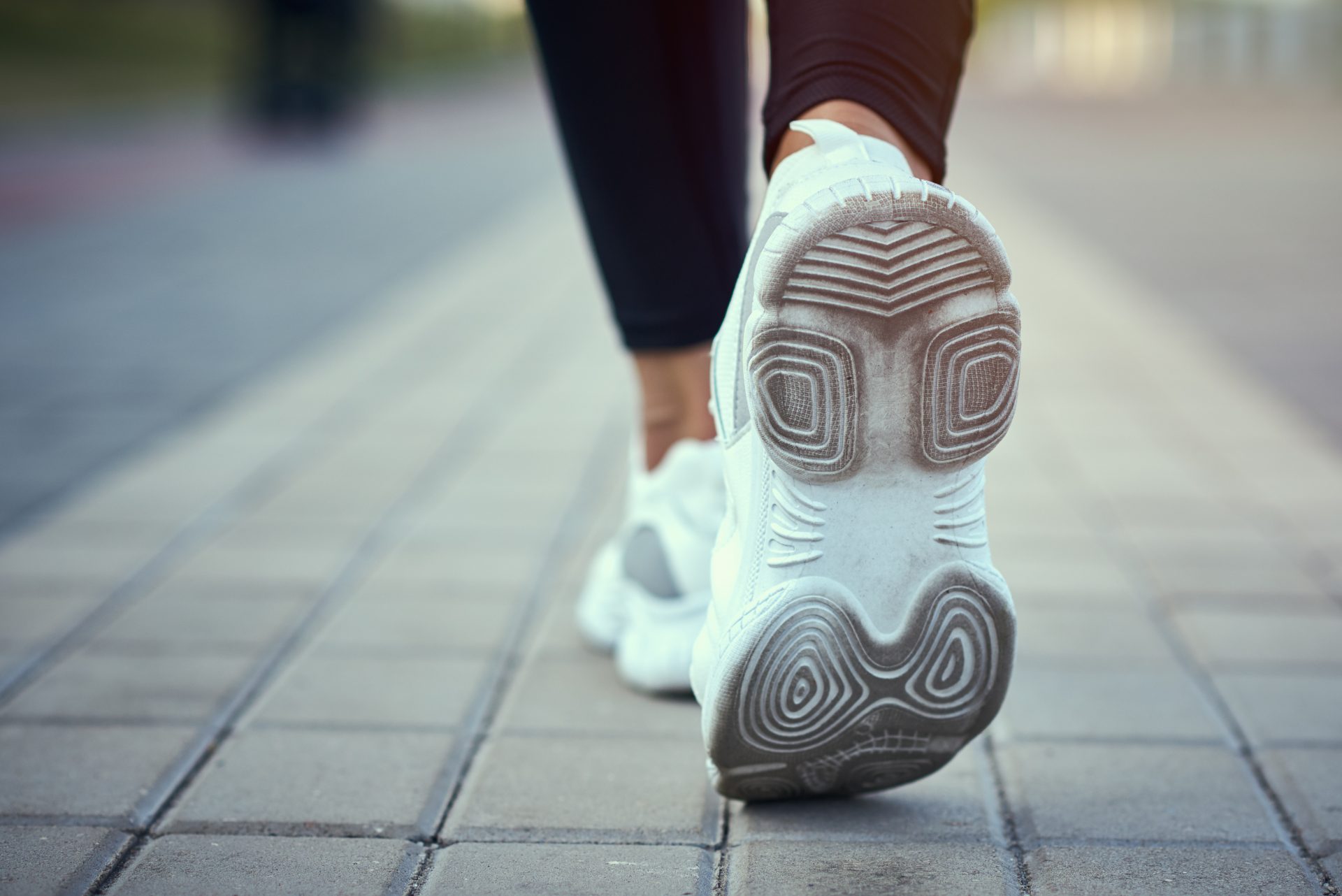Help your feet recover from long walks and runs with these stretching, rolling and strengthening tips.
With lockdown forcing us to walk purposefully – that is, leave the house solely to walk, rather than getting steps in as a by-product of our commute – people are taking the activity more seriously than ever before. And it looks like the habit is going to stick, according to activewear review site RunRepeat, as 59% of people think that running and hiking are the best way to achieve their fitness goals this year.
If you’ve taken it upon yourself to up your step count over the past year, you’ll be familiar with one of the less positive side effects: sore feet. But is this dull ache really any surprise, given that your feet have to carry your entire body weight around all day?
You may also like
Stretching: 4 of the best calf stretches for runners and walkers
“Usually this pain is due to overuse,” says Kerry Dixon from The Athlete Method. “As with any other part of your body, when you start to use the muscles and tissues more than it’s used to, it can cause pain. But the particular problem with your feet is that there are so many nerve endings that it can feel really sore to step on them after a long walk.”
It doesn’t mean you just have to just accept these aches as a downside to your new hobby, though. There are simple steps to looking after your feet so you’re ready to take on weekend walks without pain.

How to ease foot pain when walking and running
Strengthen the muscles
Prevention is always better than cure, so strengthening the tissue in our feet will enable them to take on longer walks, tougher terrain, and more impact. “If you’re feeling irritation, strengthening the muscles is a good place to start,” says Kerry. “You can do heel raises or even toe scrunches while watching Netflix by putting a towel under your foot and grabbing it with your toes before releasing back down.”
Get the right gear
“Your feet are one thing that you shouldn’t cut corners on,” says Kerry. “That doesn’t mean you have to go out and invest loads of money on new trainers, but think about it as if you were buying a pair of heels for a night out – you wouldn’t buy a pair that are so uncomfortable you couldn’t dance.”
There are loads of great walking shoes out there, but the most important thing is that “you can put your foot in and feel supported straight away,” according to Kerry. “For those with high arches, you might want to seriously consider insoles for long walks or runs, too,” she adds. And if you’re going to take the shoes seriously, don’t neglect the socks, Kerry says. Avoid any that roll down, itch or have annoying seams so that you don’t risk blisters.
You may also like
Walking shoes: the best hiking shoes to buy (and why trainers just won't do)
Roll the feet
“Athletes roll their feet all the time to loosen the tissue, release tension and improve flexibility in the foot,” Kerry says. She recommends taking a massage ball, tennis ball, golf ball or even a (strong) glass bottle and placing it under the arch of your foot. Roll it forwards, backwards and side to side, but “rather than going in tough on one bit straight away, just spend some time giving everything attention. It’s all connected, so it should loosen the tension,” Kerry says.
Stretch the toes
The foot is mainly ligaments and tissues, rather than muscle, so there aren’t a lot of great stretches to release tension in the feet. But one posture that can feel great after a long walk is a simple toe stretch –on the floor, sit on your heels with all of your toes tucked under and lean back into your heels as far as you can to feel the release.
Rest
You wouldn’t do two leg days back-to-back, so why would you put your feet through it? “Treat your feet like you would any other body part,” says Kerry. “Listen to your body – if your feet feel overworked, give them some rest.”
Remember, there’s no shame in not hitting 10,000 steps a day if your feet had a big day yesterday. In fact, it could be what they need.
Source: Read Full Article
